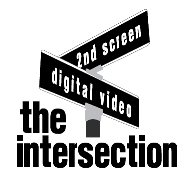An article clearly written to his peers in the industry, Somrat quickly concludes the reason he perceives that Social TV (and by extension Second Screen) are failing is that the industry fails to write apps that are compelling enough for the consumer to want to use (vs. Twitter apparently).
He goes on to state that the whole industry is trying to create a business proposition first and the consumer proposition is an afterthought. His argument starts to lose a little focus as he begins to ramble on about too many consumer propositions (a "feature checklist" mentality), then raises the specter of switching barriers (presumably from Twitter, email and Angry Birds mentioned earlier), and then comes back around to recommending extreme use case focus (pick one feature and hit it out of the park). Finally, he takes a dig at the entire TV industry, chastising them for not working together on this all important topic.
Hmmm. Seems like a reaction to the recent press and industry support for zeebox (the self-espoused Swiss Army knife of Second Screen apps with investment from NBCU and Viacom) compared to the languishing progress of Miso's Sideshow singular focus.
But rather than sling mud, let's examine the problem as presented and discuss a more objective view of the state of the industry (vs. a singular app).
First, Somrat agrees that the consumer behavior change is real. Let's all agree that this is the catalyst and potential opportunity and threat for everyone in the TV ecosystem. While content creators often lament about creating a second screen experience that distracts their viewers from their creative output, the reality is that email and Angry Birds are already distracting them (threat) and the opportunity is to build an engaging experience that gets viewers deeper into the creative story or live sport (and hopefully in a manner that supports the major business model of the ecosystem--advertising).
On experience feature sets, I think we would all agree that regardless of what features you try to include or ignore, there has to be a compelling reason for the consumer to pick up the device and open the app AND then clean and simple user experience for them to keep coming back (what Somrat describes as "habit"). We have discussed in many of the industry-wide conferences on the subject (note cross ecosystem collaboration) over the past 10 months that there are generally 4 or 5 major feature sets that could be compelling for the viewer as a reason to pick up the second screen.
- The first is to control theTV/set top box/DVD player, etc--Simple. After all, this is what the consumer has been doing for 50 years (grabbing the remote).
- The second is Social (hence the massive Twitter activity which Somrat laments is the harbinger of doom).
- The third is to Discover new content--and to his credit, for these to be compelling, they have to help the consumer find content in multiple content ecosystems. In other words, there is already a guide for your cable package (a gride guide, but it works), your OTT streaming provider (Hulu, Netflix) and your Video on Demand (whether iTunes/Hulu/Xbox or your cable provider), but to add value, you need to offer content suggestions Seamlessly across these walled gardens and then easily get the content in front of the consumer.
- The fourth is all of the additional Stimulating contextual information that a companion experience can provide. That might be a slew of interesting statistics for baseball, background information on the characters for your favorite drama, or even a shopping experience for that one TV series you obsess over.
Can you building compelling app with all of these features? zeebox is certainly trying to do so. But the real question here isn't the complexity of use cases, it is the simplicity of experience delivery. Keep in mind that your Smartphone has hundreds of use cases and until the iPhone came along, the industry suffered from this problem for years. Long before Somrat's argument, there were those who argued the device need to either be a GPS (TomTom), a phone (Nokia), a portable music player (Creative, Zune) or an email device (Blackberry). Apple finally built a UX that enabled you to easily manage those complex use cases in one device--and birthed the Smartphone market (or at least bore the first legitimate child). Google quickly followed with Android (still trying to clean-up the UX).
Finally, on the subject of collaboration, I would encourage everyone who is fighting the good fight in the Social TV and Second Screen ecosystem (content creators and distributors, service providers, app developers, etc) to join us in our cross industry efforts to take on some of these challenges together as we meet in LA, NY, London and even in the Bay Area. You can find out more about our mission and our current efforts (and cross industry membership) at www.2ndscreensociety.com.
No, this won't be easy. Yes, many will fail. But together, we can work to find a way to bring the key players in the ecosystem together to develop compelling user experiences for the viewers while working to do so in a manner that creates a sustainable business model for those players who add value in the chain. And don't forget, we are in the absolute infancy of this market when compared to its growth potential.
@ChuckParkerTech


No comments:
Post a Comment
Note: Only a member of this blog may post a comment.